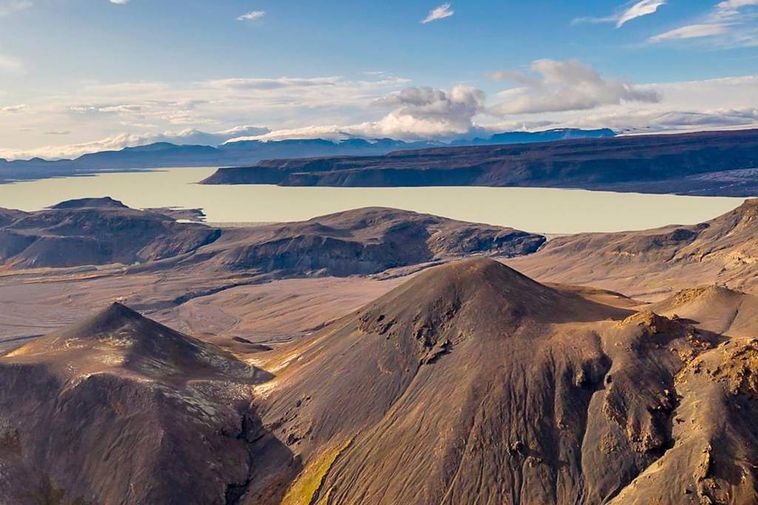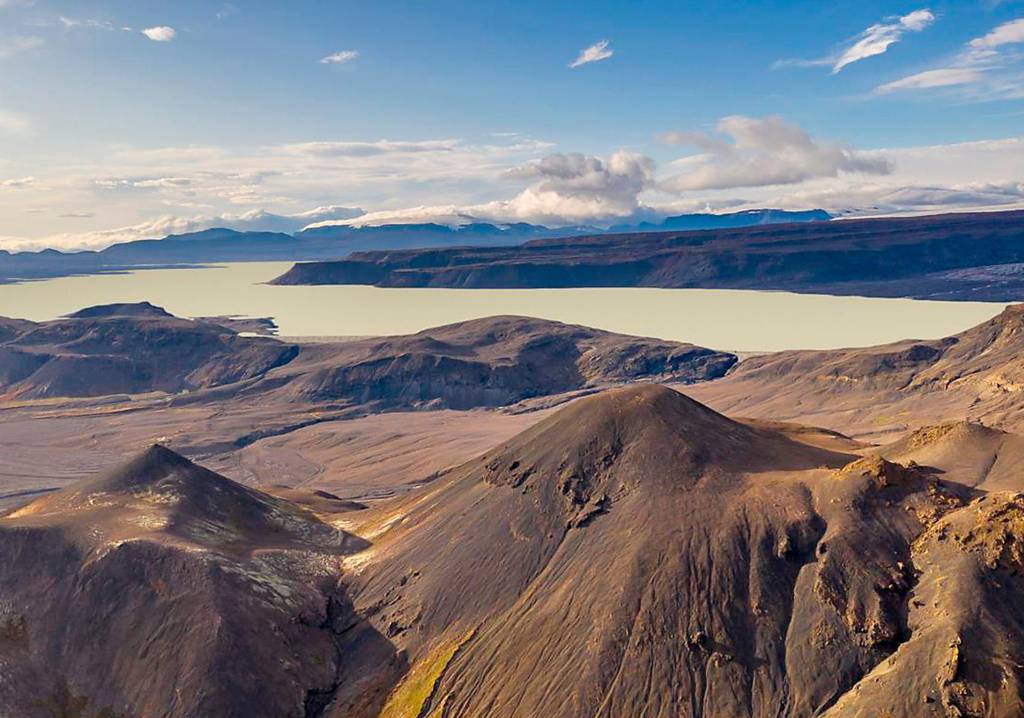Lake Hagavatn. It is expected that the water level could reach up to 23 km². The expansion of the lake is believed to have a positive effect on the rise of particulate matter in the short term.
Photo/COWI Environmental Assessment Report
Hagavatnsvirkjun ehf. plans to build a 9.9 MW hydroelectric power plant at Hagavatn Lake, south of Langjökull glacier in Bláskógabyggð. The preliminary design of the power plant, which has been named Hagavatnsvirkjun, is being worked on, and the company has now submitted an environmental impact assessment report for the power plant”s environmental impact assessment in the planning portal.
There has been interest in powering at Hagavatn Lake for years. Still, it was reported in Morgunblaðið in 2019 that it had been decided to aim for the construction of a 9.9 MW power plant instead of the 18 MW power plant that was previously planned. This has been considered a more environmentally friendly option.
“With the restoration of Hagavatn Lake, it is hoped that vegetation cover will increase and that particulate pollution will decrease, with improved quality of life in the area and in settlements, especially in the uplands of Árnessýsla.” The purpose of the Hagavatn Lake hydroelectric power plant is to integrate this expected environmental benefit from the expansion of the lake and the values created by the hydroelectric power plant from the lake,” says an environmental assessment report prepared by COWI for Hagavatnsvirkjun ehf.
At the foot of Langjökull glacier
Hagavatn is a 4-5 square kilometer lake at the foot of Langjökull. After a flood from Hagavatn in 1939, the water decreased from about 23 to 4 square kilometers and there has been a lot of drift from the old lakebed. The project is planned in the Bláskógabyggð’s master plan until 2027. It is hoped that the restoration of Hagavatn Lake will increase vegetation cover and reduce particulate pollution. It will reduce wind and sand drift over the settlement, reduce fog, and allow you to see the mountains on dry days.
Above Nýjafoss waterfall
The plans for the construction of the power plant assume that a dam will be built above the current outlet from the lake above Nýjafoss waterfall, which will then disappear, and another in the old outlet, to the west above Leynifoss waterfall. “At Leynifoss, it is planned to dig an inflow canal from Hagavatn Lake to the inlet of the power plant, which will be in the dam. It is expected that the water level of Hagavatn Lake will be up to 455 m above sea level and the reservoir size will be about 23 km²,” says a summary of the construction.
In the discussion of environmental impacts, it is estimated that the expansion of Hagavatn Lake will have a direct positive effect on the rise of particulate matter in the short term or for 10-40 years. Where there is an inflow into the reservoir, a mud cone will form over time, which could once again cause sand drift and dust formation. “Therefore, it is estimated that conditions in the Hagavatn area will be much better regarding particulate matter in the short term and comparable regarding sand drift, but in the long term there is doubt that the power plant will achieve the purpose of reducing sand drift and dust formation.”
Particulate matter resurfacing area decreases
The amount of particulate matter is the factor considered to be of greatest importance for air quality and the greatest importance for the public is that the particulate matter resurfacing area decreases. “It is assumed that the power plant will have a direct positive effect on particulate matter formation and a negligible effect on sand drift in the short term, but the long-term effects are uncertain,” the report says, among other things.
It is stated that the power plant is estimated to lead to a 30% reduction in tourist arrivals in the current target group that visits the area, as it is stated, but on the other hand it is considered very likely that with improved access to the area, the total number of tourists in the Hagavatn area will multiply.
“The Nýjafoss waterfall is considered the most negative aspect of the project for tourism and outdoor activities, but it will still be possible to explore the canyon, although a dam will be built above it, which will change the tourist experience of the canyon,” the article says. The dam at Nýjafoss waterfall is to be about 250 meters long and its maximum height about 25 meters.

